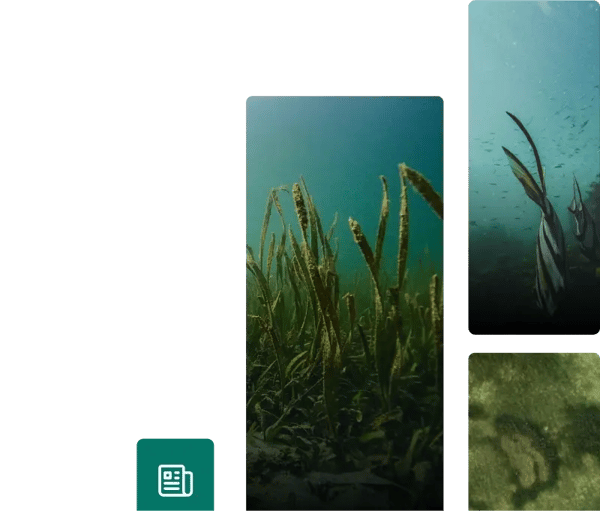Mangrove Conservation & Restoration in San Crisanto
New
Dive into the atmosphere
The project covers around 700 hectares, dedicated to the preservation & restoration of mangroves. It is a blue carbon project encompassing a wide range of activities aimed at preserving biodiversity, sustainably managing natural resources, building community capacity, and improving the health & education services provided.

Preserving aquatic ecosystems & sustainable tourism
The primary focus of this blue carbon project is cleaning and maintaining local canals and cenotes to prevent siltation, which has detrimental effects on the health of local ecosystems. Clear, open canals also enable the community to provide boat trips and wildlife observation excursions to tourists visiting the area, an important source of income.
The foundation also undertakes annual evaluations of mangroves and assessments of changes in fish populations, bird species, and crocodiles (Crocodylus moreletii) monitoring to track the impacts of its conservation work.

Pioneering mangrove restoration & carbon capture project
The Mangrove Conservation and Restoration in San Crisanto project, which was registered under Climate Action Reserve’s Mexico Forest Protocol, is the first of its kind in Mexico. To date, the project includes four reporting periods and an estimated 35,528 tCO2e have been removed by the project. It is an example of assisted natural regeneration, where local communities intervene to help native vegetation to naturally recover.
This project is an example of assisted natural regeneration, where local communities play a crucial role in helping native vegetation to recover naturally.

Key support for blue carbon project certification
In 2020, ClimateSeed came into relationship with the San Crisanto Foundation at a time when the development of the blue carbon project was facing critical financial bottlenecks to complete the certification process. These included standard requirements with overhead costs, including MRV costs for baseline sampling and calculations, verification, and certification. We partnered with the foundation to fill the financial gap and accelerate the project's launch.
In the spring of 2022, after four years since the blue carbon project's start date, the project received its certification and first credit issuance from the Climate Action Reserve.
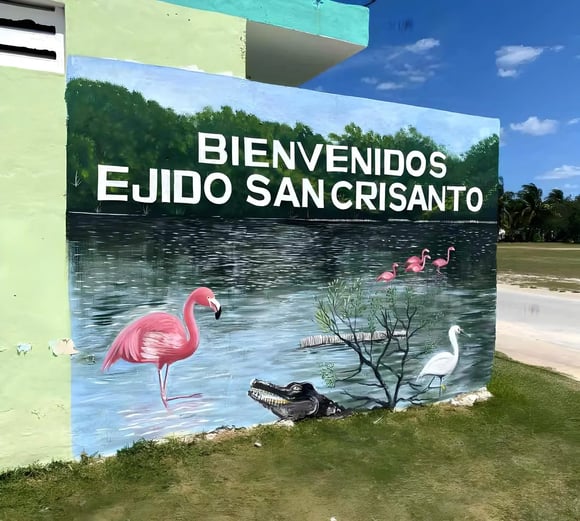
Key Elements
35 528 tC02
total emission reduction of project to date
700 Ha
of mangroves restored & conserved
45 Cenotes
rehabilitated & delisted
12 000 Meters
of local canals drained
The origins of a resilience & preservation project
San Crisanto is a small fishing community of approximately 150 Mayan families located along the northern coast of Mexico, in the peninsula of Yucatán. The region is susceptible to severe weather events, facing heavy rainfalls and a consistent risk of flooding.
In 2002, the unusual torrential rains of Hurricane Isidore destroyed 99% of the mangroves in the area, causing widespread flooding and bringing economic activity in the area to a halt.
The San Crisanto community responded to the heavy damage by building a drainage system alongside a highway bordering the mangrove, to allow floodwaters to naturally drain through the mangroves, and out into the sea. The success motivated the community to create a sustainable development program.
The San Crisanto Foundation was formally established to support the subsequent hydrological restoration and conservation efforts. This included rehabilitating 45 cenotes and draining 12,000 meters (or 12 kilometers) of local canals across 800 hectares of mangroves.
This way, the community identified and diversified their income opportunities by leveraging their knowledge from ancient Mayan traditions, ensuring sustained economic stability throughout the seasons.
The productive activities in the Ejido community have evolved and diversified, but remain unequivocally linked to the conservation and health of local ecosystems.
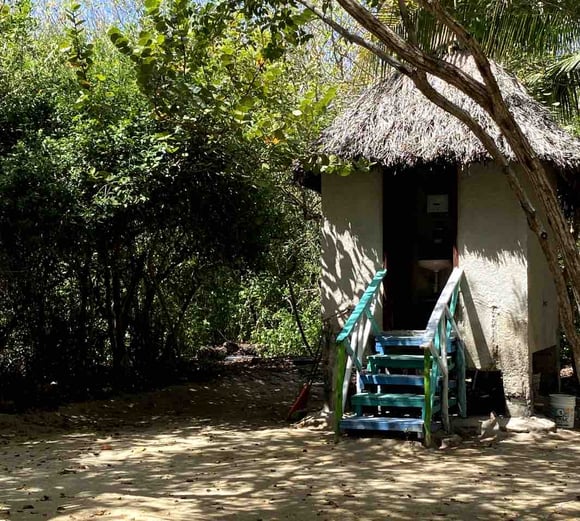
Key stages in the project
San Crisanto Foundation
The San Crisanto Foundation is a community-based organization formally established in 2001 that manages and supports all conservation and restoration, capacity-building, and education projects in the San Crisanto Ejido.
Winner of the UNDP's Equator Prize
In 2010, the San Crisanto Foundation won the United Nations Development Programme's Equator Prize, for their community-based environmental conservation, community education, and sustainable livelihoods efforts.
Project registration
The project was officially registered under Climate Action Reserve in 2018. At the time, the local community and the San Crisanto Foundation had already been supporting many hydrological activities, and the Ejido, along with some grant money, was financing all activities.
Collaboration with ClimateSeed
In 2020, ClimateSeed partnered with the Foundation to provide the necessary funding to cover the costs associated with the verification, validation, and certification process. Such costs included costs for baseline sampling and calculations, project verification, and certification.
Project 1st credit issuance
The first three reporting periods were completed in April 2022 after the first project verification (independent audit) by a Verifying Body. The project was officially certified and issued its first carbon credits. Resulting in the first blue carbon project certified under Climate Action Reserve in Mexico.
Project 2nd credit issuance
The fourth reporting period was completed in April 2023. To date, the project has completed its first four reporting periods and has removed 35,528 tCO2e of aerial carbon.
Green Destinations Top 100 Stories Prize
San Crisanto was awarded the Green Destinations Top 100 Stories prize for its success in merging ancestral wisdom with innovation to achieve sustainable results.
The evolution of a sustainable & mutually supportive project
Today, the project has already removed tCO2e. The mangrove conservation and restoration ultimately allowed both the coastal community and the ecosystem to thrive.
By 2017, 66% of mangroves lost during the hurricanes were restored, which imminently saw the reemergence of the surrounding ecosystem. Prior to the rehabilitation of cenotes, the numbers of endemic fish species were very low. After the hydrological restoration activities, the community observed dramatic increases both in the diversity of species and the abundance of fish in the cenotes. The most noticeable changes have been in populations of freshwater catfish (namely Guatemalan Rhamdia) and freshwater pikes.
5k–10k
migratory aquatic birds provided with habitat in the wintertime
+ 2,000
population of marsh crocodiles protected
167
resident, migratory & endemic bird species protected
Restoration efforts and eco-tourism have created 60 jobs, supporting the community’s sustainability. In San Crisanto, 90% of the population once lived below the poverty line, but by 2010, incomes doubled the national average ($6,000/year). Eco-tourism revenues fund infrastructure, education, and enable 30% of students to pursue higher education.
1st parametric insurance launched and supported by the community to protect their ecosystem from natural disasters, such as hurricanes.
60
jobs generated by restoration efforts
30%
of students in the area continue to pursue higher education
25
jobs created by eco-tourism businesses
The 'Ejido' is a form of land tenure designation where groups of people communally possess and manage tracts of land. The San Crisanto Ejido has full ownership and stewardship authority of the wetlands and mangroves within the territory. They operate and maintain the project, employing its youth and reinvesting revenues in community capacity-building activities to further develop the local economy.
66%
of mangroves lost during the hurricanes & restored since 2017
11,300
meters of canals restored
ClimateSeed, AXA Climate, and AXA Seguros Mexico launched the first parametric insurance policy for the San Crisanto Community to strengthen their natural disaster resilience against hurricanes. The payment of the policy was possible as a result of the revenues generated from the sale of the carbon credits.
How does the insurance work?
As soon as a hurricane sweeps through the protected area, compensation is triggered automatically. Compensation is sent directly to the San Crisanto Community (the policyholder), in order to support repair efforts following on from damages caused by the hurricane.
Community testimonials
The project has created great benefits for the local community
The success of the project is the result of 7 years of hard-work and perseverance from the community. Today, the Ejido is proud to pioneer the first blue carbon project at a national level and pave the way for the future work of communities in Latin America.
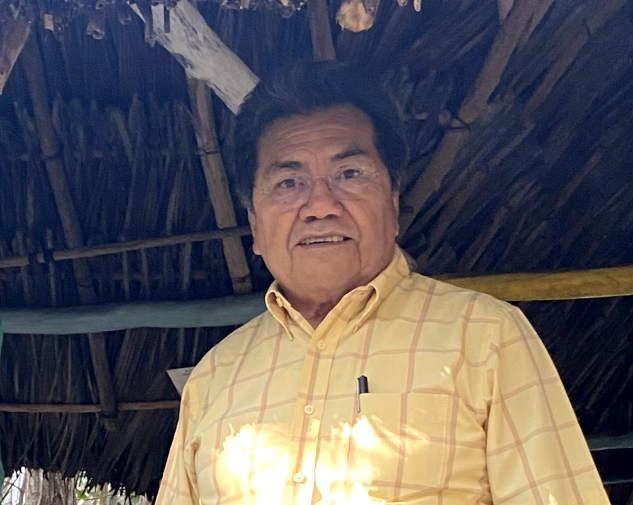
Jose Ines Loria Palma
CEO

Berny Celiset Puc Ma
I envision San Crisanto as an autonomous community, where our resources sustain us without relying on others. We strive for self-sufficiency, with schools and a clinic so our children don’t have to leave for opportunities elsewhere. It’s a fight for independence, to govern ourselves and shape our future.
As the first Ejido in Mexico to develop blue carbon projects, we also aim to be the first to achieve true autonomy.

Bruno Velarde
At the beginning, we attended a course on standards by the Climate Action Reserve. Then we adapted the Mexican Forest Protocol. Slowly, the methodology evolved to better understand how to measure mangroves. We learned a lot, and the whole process began because we were able to assist our mangroves by stimulating water circulation and mangrove nutrition.
Our nitrogen source comes from biodiversity, which is essential for the overall functioning of the ecosystem.

Daniela Salvador Mendoza
San Crisanto has a very important role in conservation, not only mangrove conservation but also for biodiversity. I worked in the transects to help measure biomass for the blue carbon project. While conducting fieldwork, we noticed an increase in biodiversity, mostly in bird species like pelicans, herons, and more.
That is the main change I have observed in the year I've been here. I was here last April for the arrival of the flamingos!

Armando Sanchez Maldonado
The arrival of flamingos sparked eco-tourism, drawing visitors eager to see the mangroves, learn about coconut products, and engage in environmental education. Before working with Climate Action Reserve, we handled the work with university students, learning to measure mangroves and conduct biomass inventories. Now, we do it ourselves.
This project has brought many positive changes to the community, and the Ejido remains motivated to keep it growing.

Julian
I am a palanquero (mangrove boat guide) in San Crisanto. I mainly work in tourism. The species you find in the mangrove, especially the snakes, are what we call the morena (brown snake) and the coralillo (coral snake) those are the ones we see the most. But there’s also one called the Taycan. It’s longer and completely green.
Here we also see pati (a type of fish), raccoons, and once I saw an anteater devouring termites. At night, I’ve seen the tigrillo (northern tiger cat) it’s like a cat with really beautiful fur. Of course, we also see crocodiles, moreletii and acutus, especially when we do night tours in the mangrove.

Roberta Palma Gamboa – Doña Mela
I am an Ejidataria because my father was an Ejidatario. There are only a few women, but we still participate, ask questions, and are active.
I make coconut sweets, I make them at home by hand in an artisanal way. All the coconuts come from San Crisanto. I am a vendor and I sell them in a nearby town where there are many schools. I sell to everyone children, elders, young girls, men, mothers… Usually, I start making the sweets at 8 pm up until 1 or 2 in the morning, and the next day I go sell them at 10 am.

José Demetrio Rivero Navarrete Telesecundaria School in San Crisanto
Crocodiles pass through here, about 2 meters long or sometimes smaller. What happens is that there’s water nearby, so they pass through the school courtyard. The kids just greet them. They’re already used to seeing them, to living with them. They even leave them fish bones like if they were dogs. They also give them names, like ‘Tasmania’.
Community testimonials
The project has created great benefits for the local community
Sustainable Development Consultant
Bruno Velarde
At the beginning, we attended a course on standards by the Climate Action Reserve. Then we adapted the Mexican Forest Protocol. Slowly, the methodology evolved to better understand how to measure mangroves. We learned a lot, and the whole process began because we were able to assist our mangroves by stimulating water circulation and mangrove nutrition. Our nitrogen source comes from biodiversity, which is essential for the overall functioning of the ecosystem.
President of the San Crisanto Foundation
Jose Ines Loria Palma
The success of the project is the result of 7 years of hard-work and perseverance from the community. Today, the Ejido is proud to pioneer the first blue carbon project at a national level and pave the way for the future work of communities in Latin America.
“
Sustainable Development Consultant
Bruno Velarde
At the beginning, we attended a course on standards by the Climate Action Reserve. Then we adapted the Mexican Forest Protocol. Slowly, the methodology evolved to better understand how to measure mangroves. We learned a lot, and the whole process began because we were able to assist our mangroves by stimulating water circulation and mangrove nutrition. Our nitrogen source comes from biodiversity, which is essential for the overall functioning of the ecosystem.
“
Sustainable Development Consultant
Bruno Velarde
At the beginning, we attended a course on standards by the Climate Action Reserve. Then we adapted the Mexican Forest Protocol. Slowly, the methodology evolved to better understand how to measure mangroves. We learned a lot, and the whole process began because we were able to assist our mangroves by stimulating water circulation and mangrove nutrition. Our nitrogen source comes from biodiversity, which is essential for the overall functioning of the ecosystem.
Want to find out more?
Explore further
our articles dedicated to climate initiatives & carbon projects
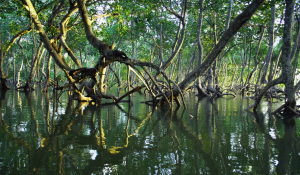
Types of Property on which Mangroves Ecosystems Sit

Mexico Visit: 3 Ecosystems, 12 Communities & 10 Days









